Executive Forums
EF1: Network Transformation
Track: Networking and Information
Tuesday, 9 December 2014
10:30 – 12:15
Moderator: Paritosh Bajpay, VP, Domain 2.0 Services Design, AT&T Labs
Panelists:
Don Fendrick, VP & CTO, Alcatel-Lucent
Kireeti Kompella, Senior VP & CTO, Juniper Networks
John Lazar, CEO, MetaSwitch
Rod Naphan, CTO & Senior VP, Fujitsu Network Communications
Doug Wolff, VP & CTO, Ericsson
Abstract: The User-Defined Network Cloud (UDNC) is a network transformation vision for the network of the future. The goal is to build a smart, cloud-like network that can address business changes, customer needs and deliver new and unique services to customers quicker than before. The UDNC being built is a global first at this scale.
Software-Defined Networks (SDNs) and Network Function Virtualization (NFV) are two key technologies used in UDNC. SDN shifts control of the network from hardware to software, removing pre-defined physical limits. This creates an “intelligent” network that is more flexible, efficient and aware of applications. NFV moves network functions from hardware-based appliances into software platforms inside virtual computing machines. This means we can update network functions from almost anywhere and do it quickly without having to redeploy new hardware. We can dynamically reroute traffic, add capacity and introduce new features through programmable, policy-based controllers.
UDNC helps operators meeting the growing demand and evolving nature of communications. It also allows operators to work with new suppliers and take advantage of new innovations more quickly and efficiently. The supplier base is expanded with the inclusion of small and nimble companies for their innovative capabilities, as well as larger, more experienced companies to tap into economies of scale.
The Executives of this Forum will highlight the UDNC network architecture, management functions and suppliers’ innovations towards the vision.
Biography:
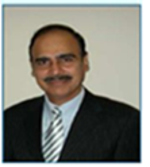
Pari started his career at AT&T Bell Laboratories after completing his M.S. in Computer Science from NYU-Polytechnic, N.Y. Throughout his thirty one year career with the Company he has led business & technical planning teams and engineering and development for Service Assurance systems for both AT&T’s wireless and wireline networks. He currently leads the Domain 2.0 Services Design & Development efforts focusing on virtualization and programmable network cloud platforms.
Throughout his career Pari’s competencies in business, technology and people management has provided him opportunities to hold positions with increasing responsibilities. Listen, Challenge, Inspire and then Deliver and Measure KPIs are his leadership Mantras through which his team has delivered breakthrough accomplishments.
Pari has received numerous accolades and awards throughout his career at AT&T. Prior to his career in management, Pari was appointed a Bell labs’ Distinguished Members of Technical Staff in 1990. He was the recipient of AT&T’s prestigious Science and Technology Medal in 2004, and Asian American Engineer of the Year Award in 2005. His projects have received AT&T’s Software Excellence Award five times for exceptional software quality and development process, and most recently, the prestigious CIO 100 Award in 2009. He has been invited to speak at industry forums such as the IEEE. Pari champions employee mentoring and is on the advisory boards of APCA and OASIS Employee Resource Groups.
Pari enjoys tennis and competitive long distance running. He and his wife have two adult children and reside in Middletown NJ.
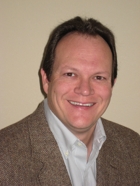 Don Fendrick
Don Fendrick, VP, CTO, Alcatel-Lucent
Don Fendrick is the CTO and the Foundry lead for the AT&T Account with Alcatel-Lucent. He is responsible for developing solutions that span Alcatel-Lucent's wireless, wireline, and application product portfolios. Prior to joining Alcatel-Lucent in 2006, he was Senior Architect in Level 3 Communications' Core Network Development organization, responsible for transport network design and technology selection. Prior to joining Level 3 in 1998, he was a product line manager for Alcatel Network Systems. In this capacity he had P&L responsibility for network management, asynchronous, and SONET product lines.
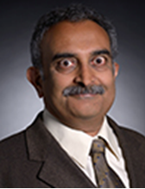 Kireeti Kompella, Ph.D.
Kireeti Kompella, Ph.D., Chief Technology Officer, Juniper Development and Innovation, Juniper Networks
Dr. Kireeti Kompella is Senior Vice President and Chief Technology Officer (CTO) for the Juniper Development and Innovation team. Before taking on his current role, he served as CTO, SDN at Juniper Networks. Previously, Kompella was CTO at Contrail Systems, which was acquired by Juniper in December 2012. Prior to joining Contrail, he was CTO and Chief Architect, Junos at Juniper Networks.
Kompella has deep experience in Packet Transport, large-scale MPLS, VPNs, VPLS, and Layer 1 to Layer 3 networking, and has been active in the IETF, as former chair of the CCAMP Working Group and as author of several Internet Drafts and RFCs (in the CCAMP, IS-IS, L2VPN, MPLS, NVO3, OSPF, and TE WGs). Prior to joining Juniper in 1997, he worked on file systems at NetApp, SGI, and ACSC (acquired by Veritas). At heart, Kompella is still an engineer and a coder, and loves talking to ASIC folks.
Kompella received a bachelor of science degree in electrical engineering and a master’s degree in computer science from IIT, Kanpur, and a PhD in computer science from University of Southern California, specializing in number theory and cryptography. He holds 46 issued patents.
 John Lazar, Ph.D.
John Lazar, Ph.D., Chief Executive Officer, Metaswitch
John Lazar joined Metaswitch in 1987 as a software engineer, and has worked in several different divisions in the company, covering both communication/networking and Internet applications. John was a key member of the founding team that established the Metaswitch Carrier Systems business, overseeing the organization's growth from initial market entry to a market leadership position with more than 600 customers worldwide.
In his role as CEO, John is committed to providing the products and services that meet the evolving business models and needs of network operators.
John graduated from the University of Oxford, United Kingdom, with an MSc in Computation and a DPhil in History. His interests include soccer, music and art - and spending time with his family.
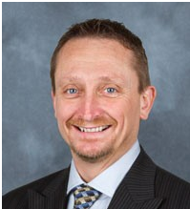
Rod Naphan, CTO & SVP, Solutions, Planning and Portfolio Management, Fujitsu Network Communications
Rod Naphan is the architect of the Fujitsu packet optical networking vision and product portfolio. Rod leads the organization that is spearheading and defining the next generation of optical networking equipment and software.
Rod has broad experience in the design and planning of optical networking platforms. Over his 20-plus years in the telecommunications industry, he has held various leadership roles in software and systems engineering, and was program manager for FLASHWAVE® 4000 MSPP series product development in North America. Prior to joining Fujitsu, Rod worked as a software engineer at Bell Northern Research.
Rod holds a BSc. in Honors Computing and Computer Electronics from Wilfrid Laurier University, and a MASc. in Systems Design Engineering from the University of Waterloo in Ontario.
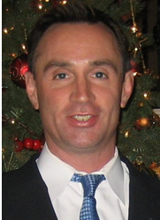
Doug Wolff, VP/CTO Customer Unit AT&T, Ericsson
Doug Joined Ericsson in 2012 as CU AT&T VP/CTO.
Previous role as GM/VP for LTE Product Line and E2E LTE Solutions at Alcatel Lucent from 2009-2012; Nortel GM/VP CDMA/LTE Product Line from 2005-2009; Nortel VP CDMA PLM 1999-2004 and various wireless product management roles. Prior to Nortel held technical positions at Northrop DSD, Motorola Cellular Infrastructure Group and M/A-COM.
Doug is married and has three children ages 13, 12 and 10.
>>Top
EF2: 5G Vision: Requirements and Key Technologies
Track: Access Technologies
Wednesday, 10 December 2014
10:30 – 12:15
Forum Chair:
Wonil Roh, Ph.D., Vice President, Samsung Electronics
Panelists:
Chih Lin I, China Mobile Research Institute
Yoshihisa Kishiyama, NTT DoCoMo, Inc.
Eric Dahlman, Ericsson Research
Peiying Zhu, Huawei Technologies Canada Co., Ltd.
John Smee, Qualcomm Incorporated
Rakesh Taori, Samsung Electronics Co., Ltd.
Abstract: The race to search for innovative solutions to enable the Next Generation Mobile Communications (5G era) has recently begun worldwide. In early 2013, the European Commission announced that it would invest €50 million in 2013 for 5G research in multiple projects such as METIS, quickly followed by the formation of the Chinese Government-led IMT-2020 Promotion Group in February 2013, the initiation of the Korean Government-led 5G Forum in May 2013, and the formation of 2020 and Beyond Ad-hoc within ARIB (Association of Radio Industries and Businesses), Japan, in October, 2013. While the standardization of 5G specifications in standards bodies such as the Third Generation Partnership Project (3GPP) and the formal ratification of 5G standards by the International Telecommunication Union (ITU) are still several years away, many share the vision of targeting 2020 for the initial commercialization of 5G cellular with drastically enhanced user experiences in several aspects including Gbps data rate support.
This session aims to bring together the experts from the mobile communications industry worldwide for presentations and discussion on the 5G vision and technologies, ranging from components, algorithms, modem, and network design to services along with the recent 5G global activities and progresses.
Bios:
 Dr. Wonil Roh
Dr. Wonil Roh is currently a Vice President and Head of Advanced Communications Lab at Samsung Electronics Corp in Korea, responsible for research of next generation mobile communications technologies. He started working at Samsung Electronics in 2003 in research and development of CDMA and Mobile WiMAX base-stations with the main focus on multi-antenna algorithms and system analysis. Then he led overall WiMAX standard activities and strategy in Samsung including IEEE, the WiMAX Forum and ITU-R, and served as Chair of Technical Working Group (TWG) of the WiMAX Forum from 2006 to 2011.
Since 2011, he has been leading research efforts for the next generation cellular (Beyond 4G or 5G) technologies at DMC R&D Center with a focus on development of disruptive technologies and feasibility studies. Dr. Roh holds a Doctorate in Electrical Engineering at Stanford University in USA.
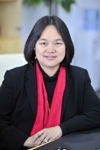 Dr. Chih-Lin I
Dr. Chih-Lin I is the China Mobile Chief Scientist of Wireless Technologies, in charge of advanced wireless communication R&D effort of China Mobile Research Institute (CMRI). She established the Green Communications Research Center of China Mobile, spearheading major initiatives including 5G Key Technologies R&D; high energy efficiency system architecture, technologies, and devices; green energy; C-RAN and soft base station.
Dr. I received her Ph.D. degree in Electrical Engineering from Stanford University, has almost 30 years experience in wireless communication area. She has worked in various world-class companies and research institutes, including wireless communication fundamental research department of AT&T Bell Labs; Headquarter of AT&T, as Director of Wireless Communications Infrastructure and Access Technology; ITRI of Taiwan, as Director of Wireless Communication Technology; Hong Kong ASTRI, as VP and the Founding GD of Communications Technology Domain.
Dr. I received the Trans. COM Stephen Rice Best Paper Award, and is a winner of CCCP “National 1000 talent” program. She was an elected Board Member of IEEE ComSoc, Chair of ComSoc Meeting and Conference Board, and the Founding Chair of IEEE WCNC Steering Committee. She is currently the Chair of FuTURE Forum 5G SIG, an Executive Board Member of GreenTouch, and a Network Operator Council Member of ETSI NFV.
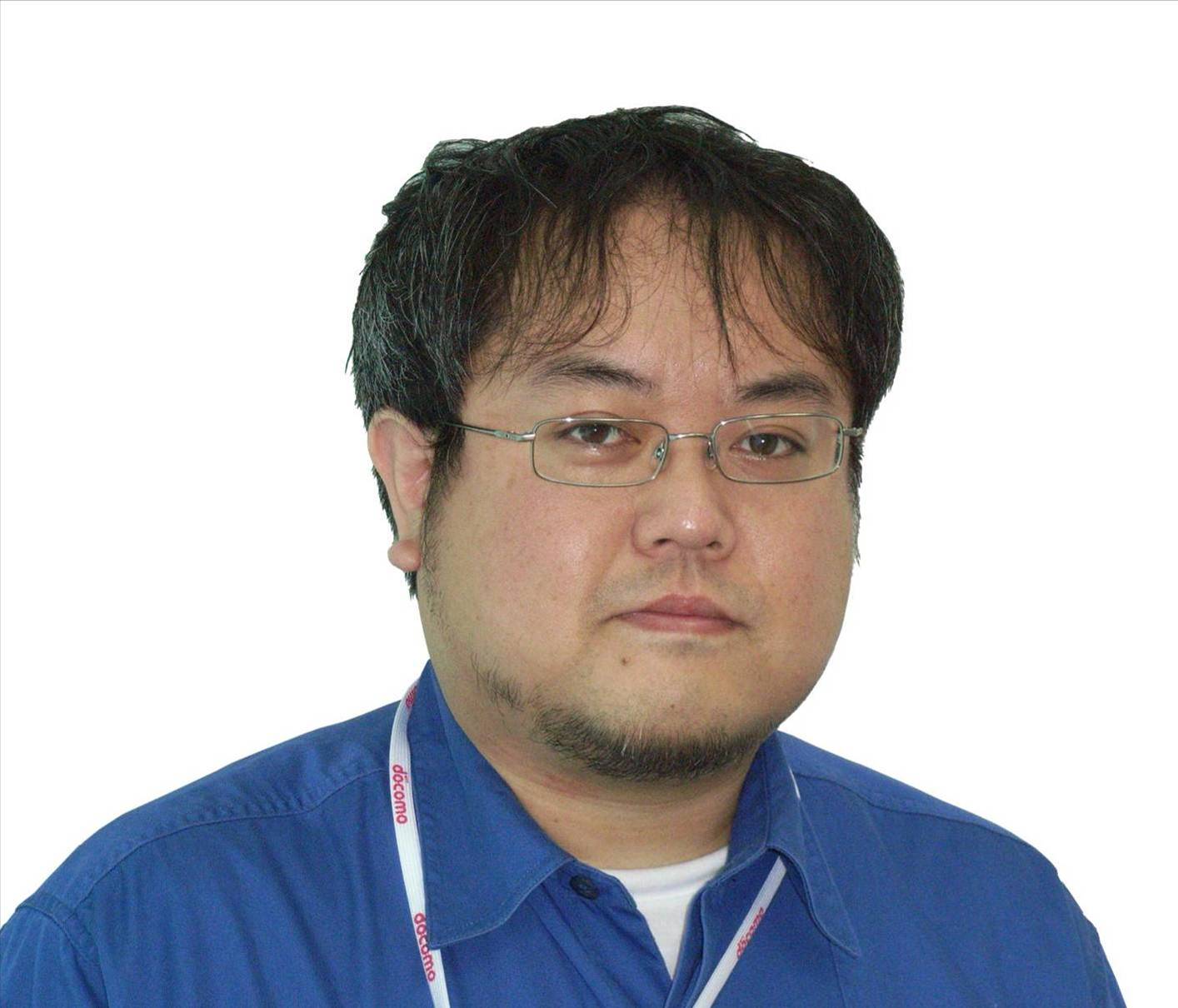 Yoshihisa Kishiyama
Yoshihisa Kishiyama received his B.E., M.E., and Dr. Eng. degrees from Hokkaido University, Sapporo, Japan in 1998, 2000, and 2010, respectively. In 2000, he joined NTT DOCOMO, INC. He is currently a Manager of Radio Access Network Development Department in NTT DOCOMO, INC., for the team to develop radio access technologies for 5G and future LTE enhancements. His current research interests include Massive MIMO/beamforming technologies, non-orthogonal multiple access (NOMA), radio interface design for higher frequency bands, and so on. He was a recipient of the International Telecommunication Union (ITU) Association of Japan Award in 2012.
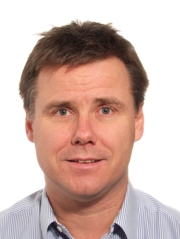 Erik Dahlman
Erik Dahlman is Senior Expert in Radio Access Technologies within Ericsson Research. He was deeply involved in the development and standardization of 3G wireless access. Later on he was involved in the standardization/development of 4G (LTE) wireless access and its continued evolution. His currently focuses on research and development of future 5G wireless access.
He is the co-author of the book 3G Evolution – HSPA and LTE for Mobile Broadband and its follow-up 4G – LTE and LTE-Advanced for mobile broadband. He is frequent speaker at different international conferences and holds more than 100 patents within the area of mobile communication.
In 2009 he received the Swedish Government Major Technical Award for his contributions to the technical and commercial success of HSPA. In the spring of 2014 he, together with some colleagues at Ericsson, was nominated for the European Inventor Award, the most prestigious inventor award in Europe, for his contributions to LTE.
Dr. Peiying Zhu is a Huawei Fellow and Senior Director of North American Wireless Research and Standards. The focus of her research is advanced wireless access technologies for LTE/LTE-A and beyond. She is currently leading 5G wireless system research in Huawei. Prior to joining
Huawei in 2009, Peiying was a Nortel Fellow and Director of Advanced Wireless Access Technology in the Nortel Wireless Technology Lab. She led the team and pioneered research and prototyping on MIMOOFDM and Multi-hop relay. Many of these technologies developed by the team have been adopted into WiMAX /LTE standards and 4G products. Peiying has more than 150 granted patents in those areas. She was actively involved in IEEE 802.16 and LTE standards development, served as IEEE 802.16j Relay Task Group vice chair, various ad-hoc chairs, and IEEE 802.16 Working Group Secretary positions. She is a WiFi Alliance Board member and Treasurer. Dr. Zhu is currently serving as a guest editor for the SPM Special Issue on Signal Processing for the 5G Revolution. Dr. Zhu received her Ph.D. degree in electrical Engineering from Concordia University in Canada and M.S. and Ph.D. degrees in Electrical Engineering from Southeast University in China.
 Dr. John E. Smee
Dr. John E. Smee is a Senior Director of Engineering in Qualcomm Research. He joined Qualcomm in 2000, holds 49 US Patents, and has been involved in the system design for a variety of projects focused on the innovation of wireless communications systems such as CDMA EVDO, IEEE 802.11, and 3GPP LTE. His work involves taking advanced system designs and signal processing techniques from theory through design, standardization, implementation, and productization. In his current role, he is the Project Lead for the 5G project in Qualcomm Research.
John also leads Qualcomm Research’s University Relations program focused on academic collaboration at universities across the U.S. and internationally. He is a recipient of the Qualcomm Distinguished Contributor Award for Project Leadership and participated in the National Academy of Engineering Frontiers of Engineering program. He received his Ph.D. in electrical engineering from Princeton University in 2000, and also holds an M.A. from Princeton and an M.Sc. and B.Sc. from Queen's University.
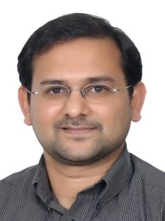 Rakesh Taori
Rakesh Taori is a Senior Director with Samsung Research America in Dallas, responsible for Research and Standardization of Next Generation Communication Systems.
Rakesh is a highly-accomplished technology professional with over 22 years of experience in leading cutting edge Research & Standardization and a prolific inventor with 74 granted US Patents. Rakesh has excelled in multiple leadership roles including Senior Director for Samsung Electronics as well as in principal researcher roles with Ericsson Telecommunications and Philips Electronics, along with outstanding global team building and collaborative attributes.
Rakesh joined Samsung Electronics in 2004 in Suwon (South Korea) responsible for Technology development and standardization of 4G (IMT-Advanced) systems. Significant contributions include creation of industry’s first cellular standard for relay (IEEE 802.16j), industry’s first multi-hop, mesh standard (IEEE 802.11s) and 4G standardization efforts in IEEE 802.16m which was adopted as one of the IMT-Advanced systems. Rakesh was the Vice Chair of the IEEE 802.16 Working Group.
Rakesh has been a leading figure in Samsung’s 5G efforts, right from the inception, driving the development of core MAC and Network aspects, introducing core concepts such as Cloud Cell and delivering fundamental technologies for beamformed MAC, essential for enabling mm-Wave band operation. Rakesh also serves on the Board of Directors of the Wi-Fi Alliance.
>>Top
EF3: Internet-of-Things – from Standardization to Deployment and Commercialization
Track: Emerging Applications
Thursday, 11 December 2014
10:30 – 12:15
Forum Moderator: Shelley Gretlein, Director, Platform Software and Proficiency, National Instruments
Forum Organizer: Nikhil Kundargi, Senior Wireless Platform Architect, National Instruments
Panelists:
Kwok Wu, Head, Embedded Software & Systems, Freescale
Liam Quinn, Senior Fellow, Dell
Dilip Krishnaswamy, Senior Researcher, IBM Research Labs
David Fuller, VP, Application and Embedded Software R&D, National Instruments
Skip Ashton, VP of Software, Silicon Labs
Pascal Thubert, Principal Engineer, Cisco’s Chief Technology and Architecture Officer (CTAO) organization
Abstract: By 2020, the Internet-of-Things is expected to drive the deployment of 50 billion connected devices and a value-at-stake of $19 trillion. What started as a concept for providing universal identities in the form of RFIDs has evolved into a domain encompassing numerous technologies from low-power sensor networks to cloud applications as well as a whole new breed of business models. From being a concept attracting plenty of research, the domain has been adopted by multiple standardization bodies consolidating the many industrial best practices across numerous verticals and industrial players from Machine-to-Machine approaches of service providers to the improvement of operational excellence by both larger and smaller enterprises.
The state of the Internet-of-Things has reached a breaking point with a large number of pure players providing offerings across the whole range of different services from low powered devices focusing on the ease-of-use to device management platforms including connectivity management. On the application side a number of platforms are available providing different sets of capabilities including support for application development to targeted platform where enterprises can develop their own vertical-targeted applications.
The focus of this forum is to hear from executives of major companies to provide a unified view of the state of the Internet-of-Things from their aspiration into the Internet-of-Things.
Bios:
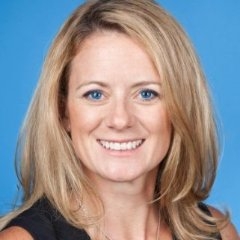 Shelley Gretlein
Shelley Gretlein is responsible for acquiring and retaining successful engineers and scientists with world-class software platform needs. She leads a dynamic team of engineers, product managers, marketing professionals, and learning experts to ensure each NI software user is successful and productive. Leveraging insight from customer interactions, she also works with R&D leadership to define current and future generations of platform software.
Gretlein is involved in industry consortia on IoT, robotics, industrial control and embedded forums, including as a graphical system and embedded design consultant for various publications. She has a passion for empowering engineers that are solving the world's grand challenges and is active in Girlstart FIRST and other STEM-related groups.
Gretlein is a proud wife and mother of three who enjoys running as well as all water and snow sports. She holds several Executive Education completions from the University of Texas, Berkeley, and Kellogg - for innovation, marketing, and product design as well as a dual bachelor’s degree in computer science and engineering management with a minor in French and Mathematics from the Missouri University of Science and Technology.
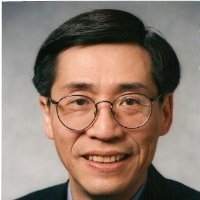 Kwok Wu, PhD
Kwok Wu, PhD is Head of Embedded Software and Systems Solutions at Freescale Semiconductor. Dr. Kwok Wu is an award-winning industry veteran and sought after speaker, and has been awarded 2012 Innovator of the Year by ECD – Embedded Computing Design Magazine for his platform approach to Wireless Smart IoT Gateways*.
In addition, Kwok was awarded the 2011 Innovative Networking Product Award, from the Broadband World Forum with Secured Broadband multi-service Gateway. He was also a recipient of the 2012 Best Networking and Communication Product Award, Smart Metering at Australia & New Zealand Summit.
Dr. Wu has many years of diverse experience in advanced embedded systems and software which includes Software Defined Networking (SDN Opendaylight, Openflow, NFV, OVS, OpenStack). He has delivered high-performance scalable software platforms and products for Freescale’s Power Architecture, ARM, and ZigBee Systems-on-Chips (SoCs) in the wireless enterprise Access Point, broadband networking, telecommunications, enterprise, consumer, automotive, industrial, smart energy, and health segments. Dr Wu will have a book “Collaborative Internet of Things – C-IoT” to be published by John Wiley and Sons in Q1, 2015.
He has held various executive management positions at AT&T Bell Laboratories, Lucent Technology, Actel, AMD, Lattice and Freescale Semiconductor. Kwok is member of IEEE Computer Society, and holds a Treasurer position at the Austin Chapter of IEEE Communications Society and hold a PhD, EECS (Computer Engineering) from the University of Texas at Austin.
(*) http://embedded-computing.com/articles/2012-solutions-freescale-semiconductor/
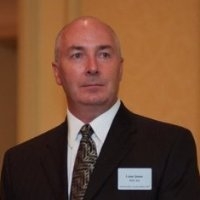 Liam Quinn
Liam Quinn is a Dell Fellow and Executive Director in the Client computing group. In this role Liam has responsibility to lead technology innovation across the client product groups. In his current role, Liam is leading the strategy development on The Internet of Things, driving the development of IP, and the interlock process of client architecture with Enterprise, Software, and Services to deliver end-to-end system solutions for our key customer segments.
Mr Quinn joined Dell in Jan 1997, and holds over 76 granted and pending patents, and was named inventor for the year in 2005, 2007, and 2014. Mr Quinn represents Dell on the Board of the Wi-Fi Alliance, and the UT WNCG Board (Wireless Networking and Communications Group).
Mr. Quinn holds a BSc in Electrical Engineering from the Dublin Institute of Technology, a BSc in Computer Engineering from the University of Limerick, and an MSc in Computer Engineering from Boston University. He is a member of the IEEE, a Fellow of the IET (Institute of Engineering Technology), and a certified Chartered Engineer. Liam was an adjust Professor at the Dublin Institute of Technology, the University of Texas and Texas State University. Liam is a frequent presenter in the Dell Executive Briefing Center and is the Executive Sponsor for Corning and Qualcomm. He is a published author on Networking (http://www.amazon.com/Fast-Ethernet-Liam-B-Quinn/dp/0471169986/ref=sr_1_1?ie=UTF8&qid=1400686232&sr=8-1&keywords=Liam+Quinn+fast+Ethernet).
Prior to Dell Mr. Quinn worked for over 6 years with Computer Automation, for over 6 years as a senior design Engineering with Digital Equipment Corporation, and 4 years at Thomas Conrad Corporation.
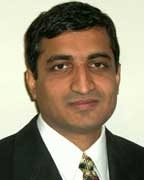 Dilip Krishnaswamy
Dilip Krishnaswamy is a senior research scientist at IBM Research in Bangalore, India. His current research interests include distributed data center systems, network functions virtualization, cognitive systems, smarter planet systems,nanoscale information processing, edge processing systems, hierarchical distributed analytics, wireless distributed computing, parallel processing, and nano-biological networks. He graduated with a Ph.D. degree in Electrical Engineering in 1997 from the University of Illinois at Urbana-Champaign. He received the best paper award for research related to his thesis in the parallel processing area for the 1997 IEEE VLSI Test Symposium. He was a Platform Architect at Intel where he worked on various projects including the Pentium4 processor development, system-on-chip mobile platform architectures (lead architect for Intel's first cellular SoC - PXA800F), and cross-layer wireless multimedia optimizations in the digital home. He taught courses related to parallel computer architecture, and advanced digital systems design, at the University of California, Davis, where he now serves on the Industrial Board of Advisors. Since late 2006, he was a senior staff researcher at the Qualcomm Research Center in San Diego, California.At Qualcomm, he worked on self-aware platforms, m2m service layer middleware, collaborative wireless nanobots for cancer therapy, Continua healthcare/oneM2M/DTN standards development, wireless distributed computing, parallel wireless communications & concurrent bandwidth aggregation, heterogeneous cooperative techniques, user modeling for distributed analytics, data-mining, and adhoc heterogeneous tunneled access technologies . He served as the Associate Editor-in-chief of the IEEE Wireless Communications Magazine from 2009 to 2014. He chaired the IEEE comsoc emerging technical subcommittee on Applications of Nanotechnologies in Communications from 2009-2013. He is an editor for the Journal of Nano Communication Networks. He is a B. Tech (EC) alum from IIT Madras.
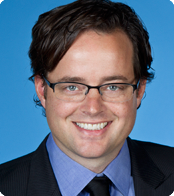 David Fuller
David Fuller is the vice president of Application and Embedded Software for National Instruments. In his role, Fuller is responsible for efficiently integrating NI’s vision of graphical system design into the NI LabVIEW platform. In addition to leading the global LabVIEW team, which works on technologies spanning from LEGO® to LabVIEW FPGA, he is responsible for the NI Aachen office and the NI DIAdem product line.
Fuller has worked in NI R&D since joining the company in 1995. He spent the first several years of his tenure as a software engineer developing tools and technologies related to embedded systems management and I/O. He then moved into R&D management to focus on applying LabVIEW and the vision of graphical system design to real-time heterogeneous systems with LabVIEW, LabVIEW Real-Time, and LabVIEW FPGA.
Fuller holds more than 30 patents and was jointly awarded the prestigious 2011 Edith and Peter O'Donnell Award in Technology Innovation from The Academy of Medicine, Engineering and Science of Texas (TAMEST). He graduated cum laude from Texas A&M University in 1995 with a bachelor’s degree in computer engineering.
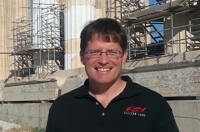 Skip Ashton
Skip Ashton is the Vice President of Software at Silicon Labs. He is responsible for managing the company’s software and quality assurance teams, focusing on 8-bit and 32-bit MCU driver software and libraries, Ember ZigBee software and software for short-range sub-GHz wireless IC products. Previously, Skip was the Vice President of Engineering and Technology at Ember before its acquisition by Silicon Labs in 2012. Prior to Silicon Labs and Ember, Skip held a variety of program management and engineering management roles focusing on high-quality product development. Skip has been involved with ZigBee technology since 2004 and is a member of the ZigBee Board of Directors, the Chair of the ZigBee Technical Committee, and the Chair of the ZigBee Test and Certification Committee. Skip is on the Board of Directors of Thread and also the Thread Vice President of Technology. Skip is on the Board of Directors of the Connected Lighting Alliance. Previously he was a member of the Smart Grid Architecture Committee with NIST for development of Smart Grid standards. Skip has been heavily involved in the development of the ZigBee PRO stack, ZigBee Home Automation profile, and the ZigBee Smart Energy 1.0 and 2.0 profiles. Skip graduated with a mechanical engineering degree from Georgia Institute of Technology and spent five years in the US Navy Nuclear Program.
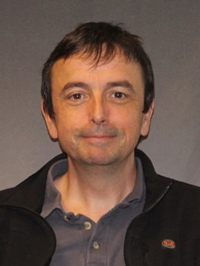 Pascal Thubert
Pascal Thubert is a Principal Engineer within Cisco’s Chief Technology and Architecture Officer (CTAO) organization, where he focuses on industrial and other deterministic networks and products in the general context of the Internet of Everything. He is co-leading 6TiSCH, the IETF standard for IPv6 over the 802.15.4e TSCH deterministic MAC, and DetNet, a new joined effort with IEEE for cross layer deterministic networks. Since he joined Cisco in 2000, Pascal has specialized in IPv6 as applied to mobility and wireless devices, within Cisco’s Technology Center and then Cisco’s core IPv6 product development team. In parallel with his R&D missions, he has co-authored multiple IETF RFCs and draft standards dealing with IPv6, network mobility and the Internet of Things (6LoWPAN). In particular, Pascal participated as co-editor to the ISA100.11a industrial WSN standard and the RPL routing protocol, and participated actively to the introduction of the IT/OT convergence for an Industrial Internet.
>>Top
Back home >>
















